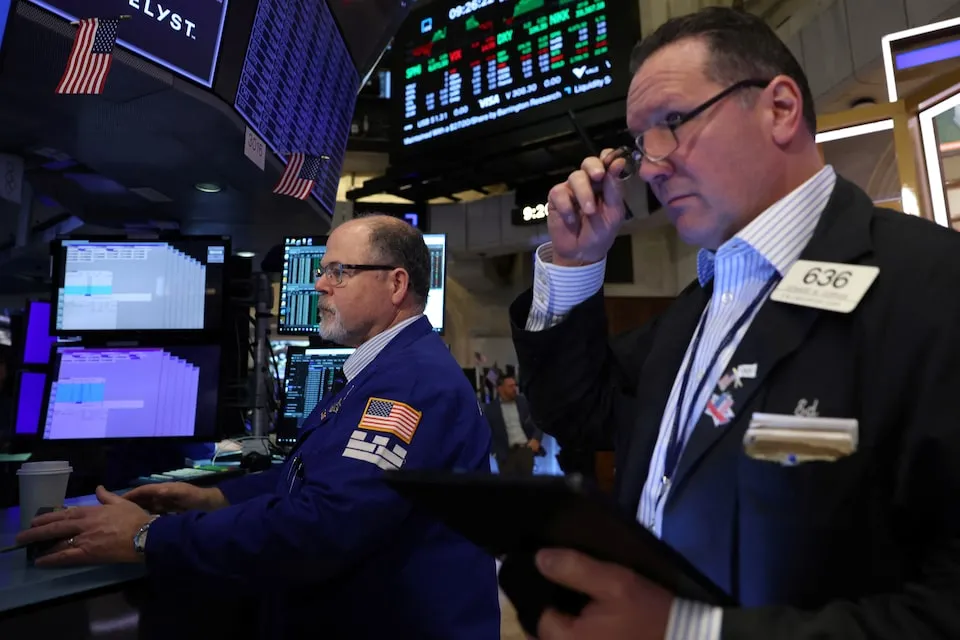Nathan Thooft isn’t sounding the alarm on markets, but he’s not ignoring the warning signs either. His team at Manulife Investment Management, which oversees $160 billion in assets, still holds a slight overweight in equities. Yet as U.S. stocks repeatedly set new highs, Thooft has been quietly trimming positions in major winners, adding bonds, and layering in longer-dated options for protection.
“Markets feel a little too comfortable right now,” said Thooft, chief investment officer of multi-asset solutions at the Boston-based firm. Over the past nine months, his team has reduced exposure to high-yield credit, shifted toward international equities, and allocated more capital to safer assets. “We’ve had a massive rebound since the tariff-driven lows in April with very few pullbacks. Valuations look stretched, and risk indicators are at their lowest levels this year.”
This balancing act is something many professional investors are grappling with: how much protection to maintain during a stock and credit rally that has repeatedly defied predictions of a slowdown.
The combination of AI-driven optimism, strong corporate earnings, and an economy that has endured the highest interest rates in 20 years has fueled the surge. Still, inflation pressures persist, and the Federal Reserve has yet to officially declare victory.
The gap between confidence and caution has sparked several defensive moves in recent weeks. There’s been a noticeable uptick in downside protection through equity options, renewed flows into cash and gold products, and reduced activity in leveraged long ETFs.
Meanwhile, sentiment surveys reveal growing skepticism: bears now outnumber bulls among retail investors, and 91% of respondents in Bank of America’s latest survey believe U.S. equities are overvalued.
Put together, the message is clear investors are optimistic but hedged. They’re chasing returns without abandoning their safety nets. Even in this seemingly calm market, Wall Street knows the rally’s foundation could face a reality check.
This past week once again favored the bulls. Markets continued to bet on a September Fed rate cut, the S&P 500 extended its summer rally, and corporate fundraising stayed strong. Bitcoin hit fresh records, global equity funds attracted $26 billion led by U.S. large caps, and bond funds matched that inflow. Volatility measures reflected calm, with the MOVE Index at its lowest since 2022 and the VIX hovering near year-to-date lows.
Garrett Melson, a portfolio strategist at Natixis Investment Managers Solutions, has been adjusting allocations more frequently than ever sometimes every few days to keep pace with rapid shifts in market sentiment.
“Things seem to be cooling gradually, but consensus can get overly bullish quickly,” Melson noted. His team has pared back credit exposure, added Treasuries, and kept only a slight overweight in technology, still supported by the AI trade.
While he anticipates a 5% to 6% pullback as optimism peaks, he doubts a major downturn is coming. Treasuries, he added, remain the most dependable hedge compared to gold or commodities during prolonged slowdowns.
The balance between offense and defense was tested last week. Bulls cheered a cooler consumer inflation report, only to curb bets on immediate Fed cuts after wholesale prices surged the next day. By Friday, yields moved higher and stocks slipped when weak consumer sentiment overshadowed a strong retail sales report.
These swings have kept a layer of caution alive, reinforcing the debate over hedging strategies. One key metric the skew in the S&P 500, which measures the relative cost of crash protection has climbed significantly. At the same time, leveraged ETFs with bullish bets have seen nearly $9 billion in outflows over the past month, according to data.
The summer rally has pushed the S&P 500’s forward price-to-earnings ratio above 22, well above its 10-year average near 18. Still, the urge to hedge runs up against a simple reality: markets have repeatedly shrugged off shocks in recent years. From sustained high interest rates to trade tensions and policy swings, investors have shown remarkable resilience. For managers like Thooft and Melson, the challenge is deciding how much to respect that strength and how much to prepare for the moment it falters.
Not all investors are adding hedges. Julie Biel, portfolio manager and chief investment strategist at Kayne Anderson Rudnick, hasn’t made a single change to her 28-stock portfolio this quarter. She avoids derivatives, preferring “pure blue-chip winners” to weather volatility. “FOMO isn’t the same as euphoria,” she said, describing a market where the AI trade dominates and investors crowd into a handful of clear winners. “It means when trouble hits, everyone runs for the exits fast.”

Subscribe to our newsletter!
As a leading independent research provider, TradeAlgo keeps you connected from anywhere.








